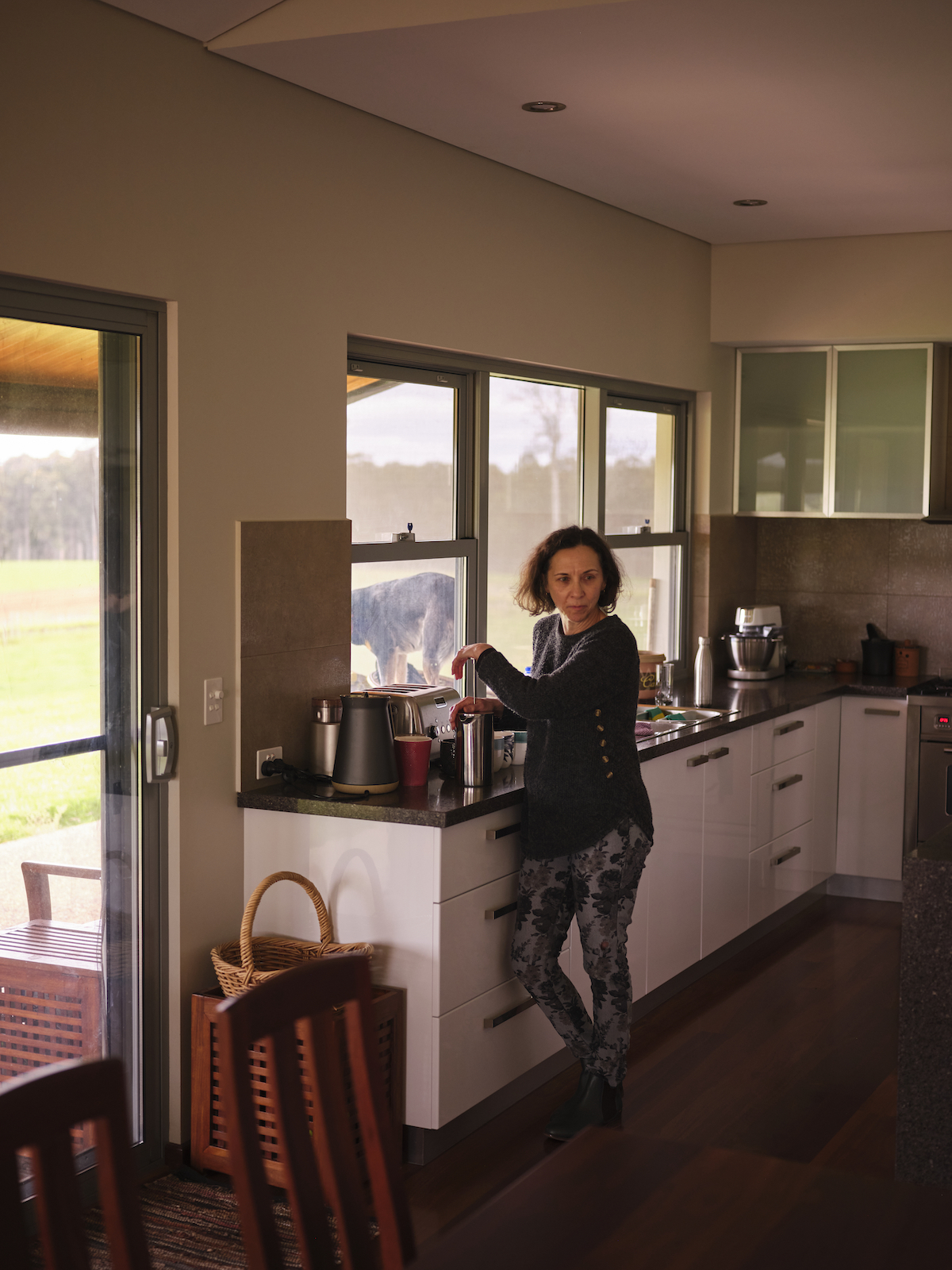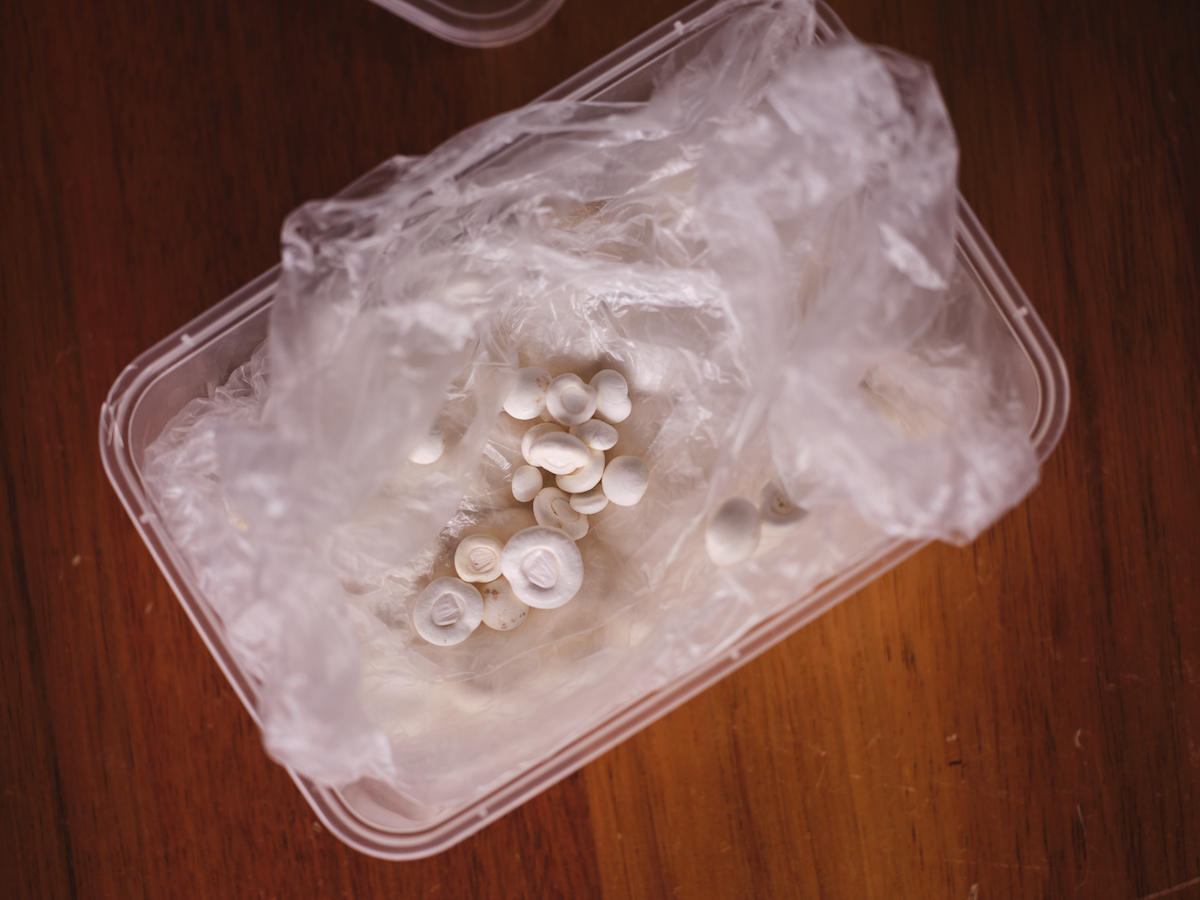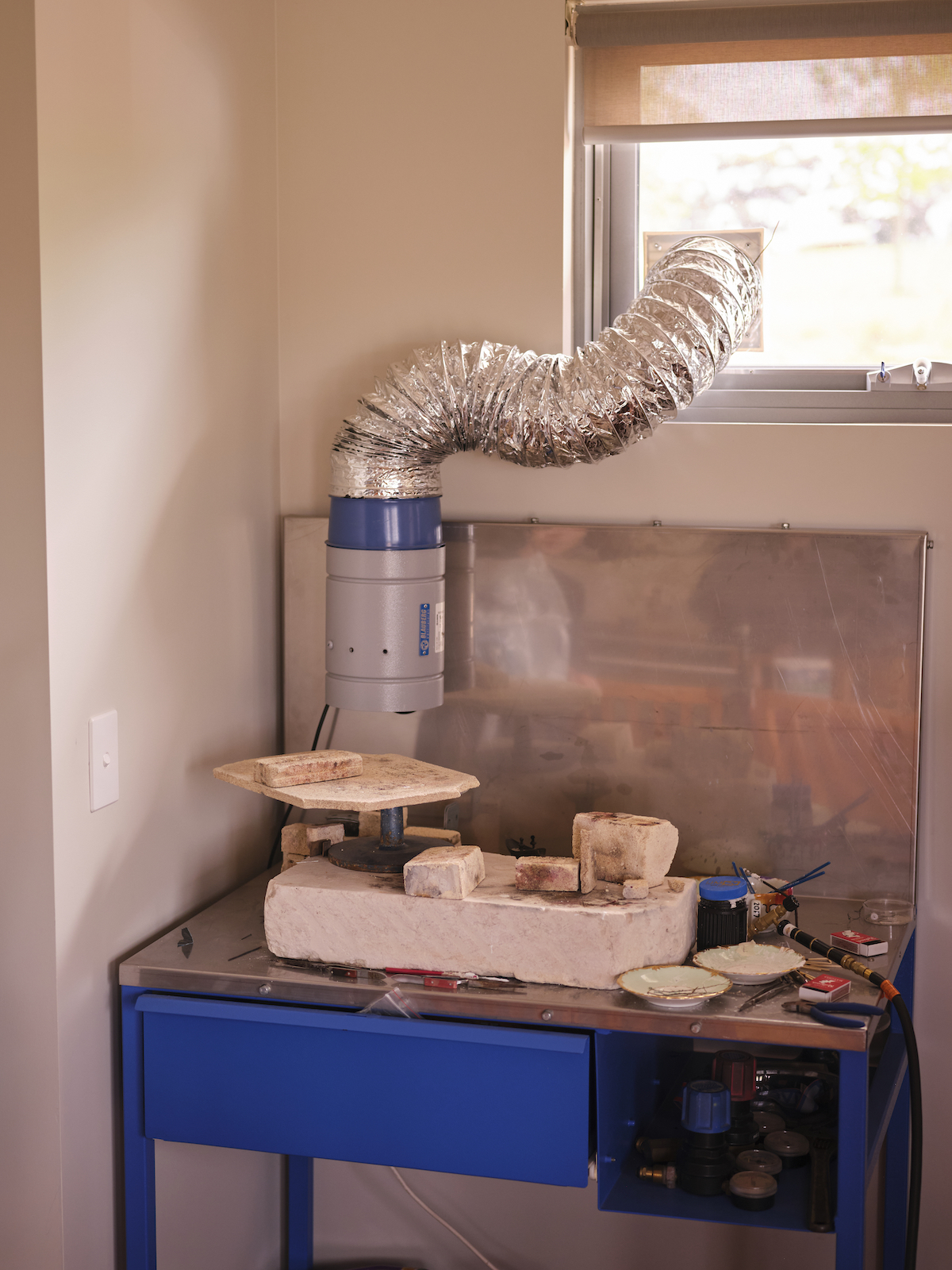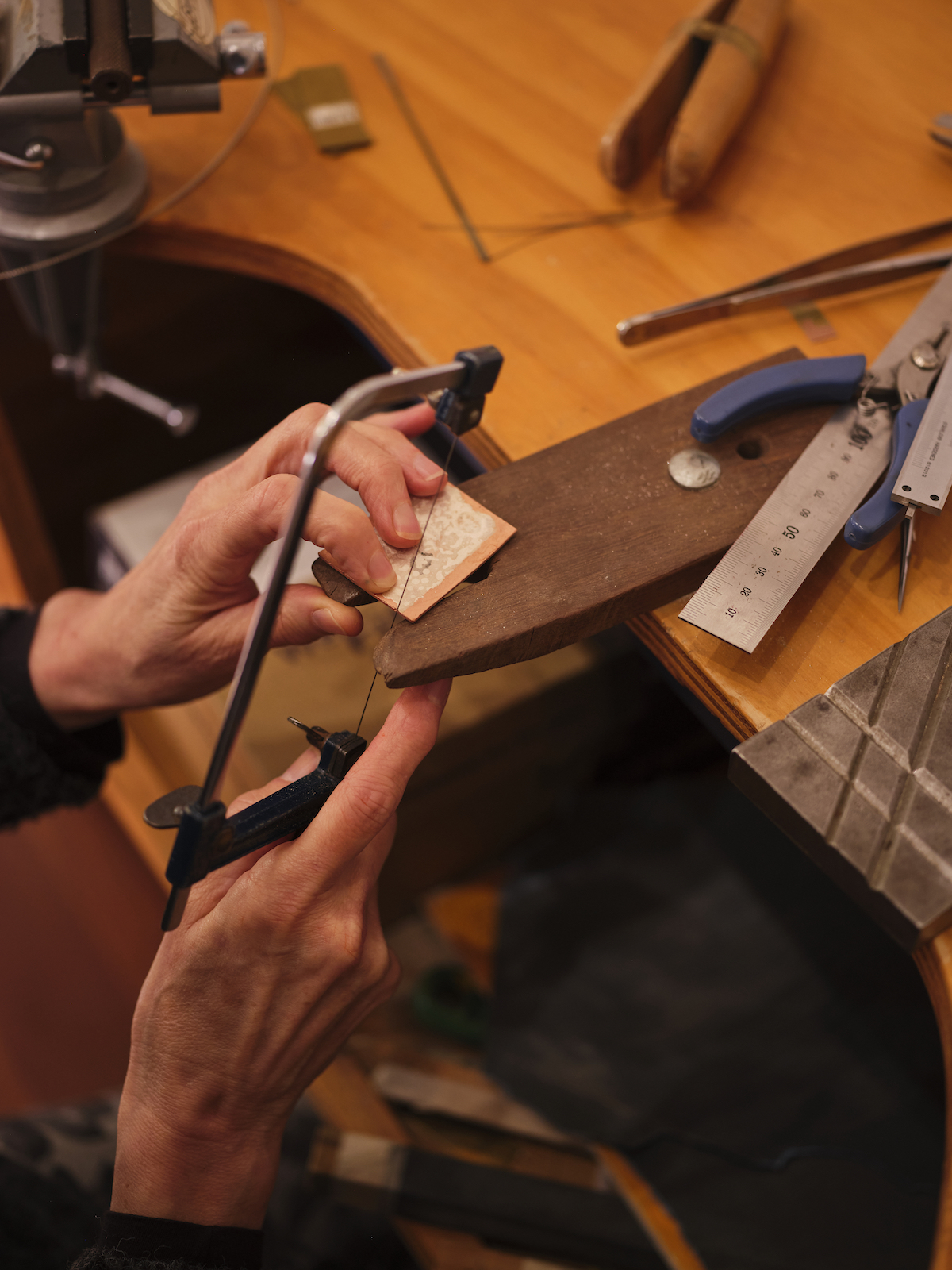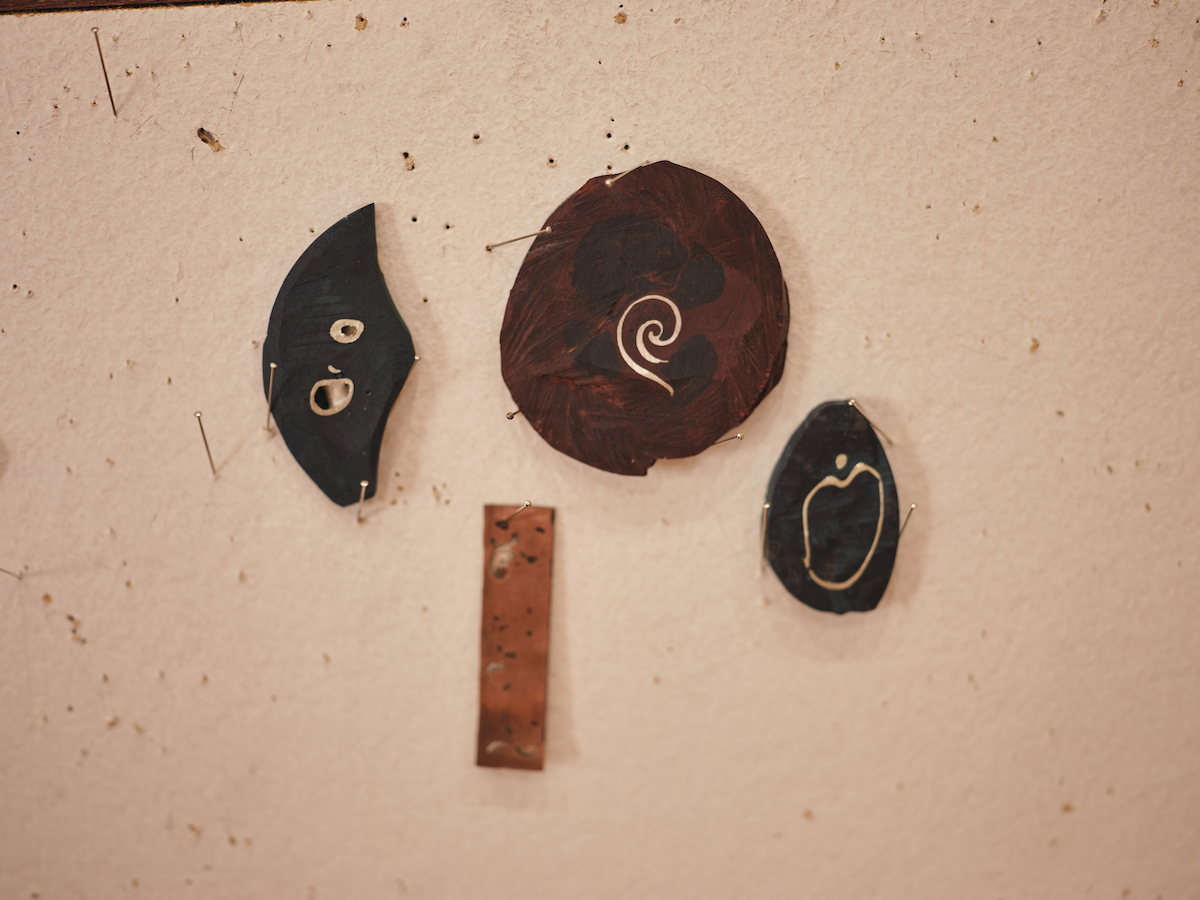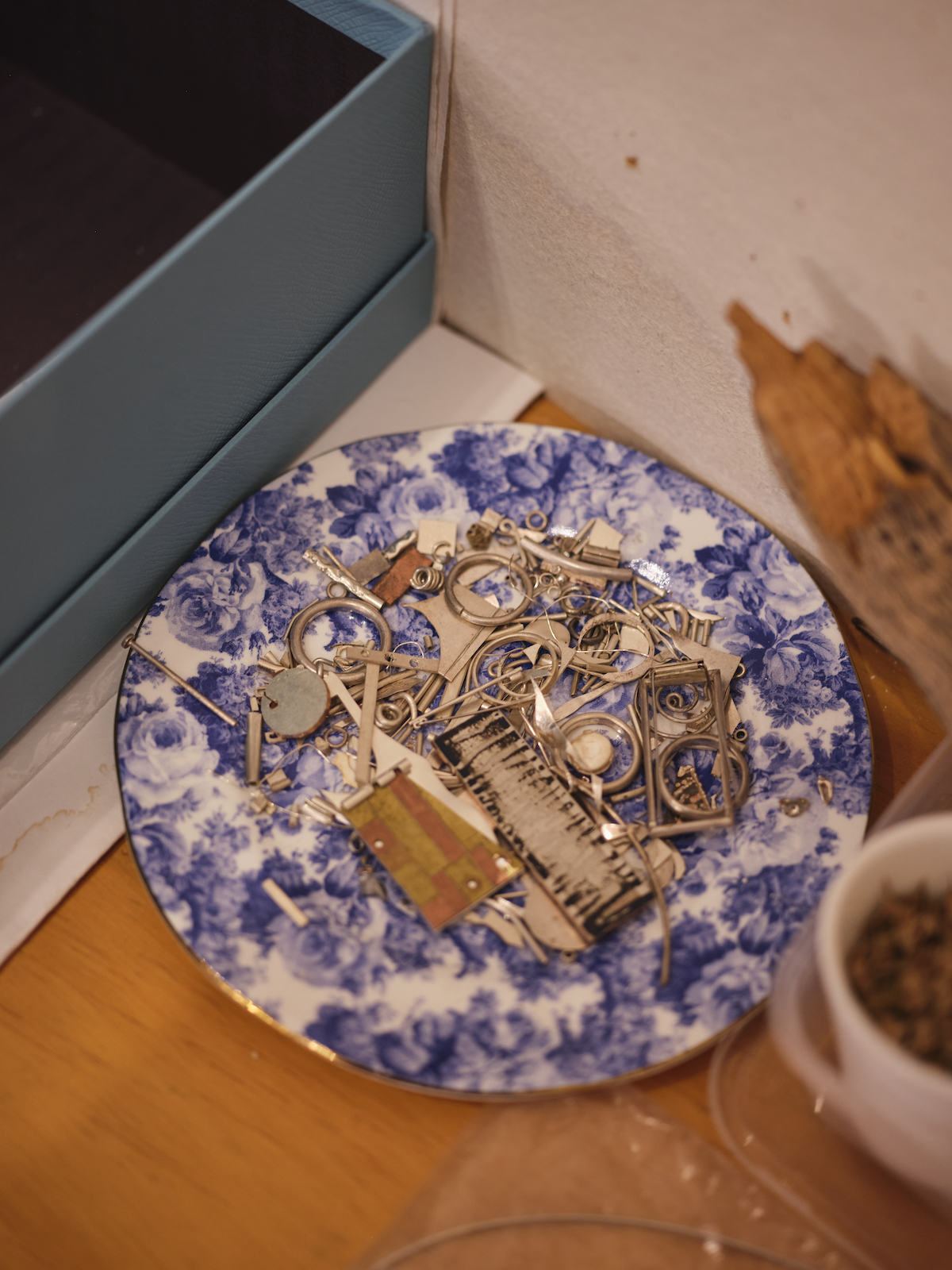“I like to see the body as a site for sculpture” says artist Louise Tasker, whose works Water Rights Series – Nelson Location & Water Rights Series – Water Markers, feature in The Alternative Archive exhibition.
Her jewellery pieces move beyond the decorative and toward the political, addressing critical environmental issues affecting her community. She also makes large-scale sculptures that speak to climate change and ecological collapse, combining intricate metalsmithing techniques with peculiar materials like marron gastroliths, sea urchins and computer cable. We visited Louise at her home-studio in Smith Brook, a rural farming region in the southwest of WA, to learn more about her practice.
Louise Tasker in her home studio, 2022. Photography by Duncan Wright
Louise initially studied a chemistry degree which is where, from across the lab, she met her partner. They had children young and in between parenting and moving around for her partner’s work, she started to attend evening drawing and painting classes. “Every time we moved, I picked up classes. A life drawing class here, a pastel class there, a watercolour class somewhere else” she says. Pursuing her creativity, she enrolled at Rockingham TAFE where she gained an Advanced Certificate and a solid art portfolio. She then began a Visual Arts degree at Curtin University, sharing of her first year, “I went into the jewellery department and just fell in love with metalsmithing. And I suppose that little bit of a science background, the metallurgy, everything made sense. I understood it”.
Louise majored and minored in jewellery, wanting to spend as much time as she could in the studio. She completed a DipEd and Honours, and was selected for the OZ Gold Awards. She created jewellery and hair pieces for the WA Ballet 50th Anniversary, was featured in West Magazine and Qantas Magazine, and also undertook a residency in Barcelona supported by the Australia Council for the Arts. However, for health reasons Louise then had a period of not making. She was diagnosed with Congenital rubella, a condition that causes loss of vision. As she shares, “Even though I was doing fine jewellery, I started losing my eyesight. So now my lenses aren’t mine, my corneas aren’t mine. Because my eyesight was all over the place and I was in so much pain…I had a huge gap of 15 years where I did not make anything”.
Eventually, a professional workshop in Manjimup inspired Louise to make again. And she found an optometrist willing to make specialist glasses with all sorts of levels of magnification, so she could return to her intricate work. She had a solo show with some pre-existing work at the Manjimup Gallery in 2019, and was invited to make work for the The Alternative Archive exhibition. “That was the first thing that I’d really sat down and made new work for” she says. After a pause in her practice, Louise shares “To start again has been a real buzz. It’s been quite a journey in that respect. The last couple of years of getting back into the studio, you just feel like part of yourself has been locked away, and you don’t realize it until you can get it out again”.
This journey has led her to explore working on a bigger scale. For example On the Brink IV, that’s constructed from sea urchins, co-axial cable, fishing line and stirling silver. Louise came across millions of these urchins along a beach while walking the Cape-to-Cape track. With climate change and sea levels rising, Louise questioned, “Was this a mass extinction?”. Hanging from the gallery roof, like an over-sized necklace, the work asks of us “Who’s going to wear the big issues surrounding the fragility of our environment?”. The sculpture is also made from discarded computer cable, a material often possessing a high silver content. Made during COVID, Louise saw the sea urchins as our “personal bubbles” and the cable as the connections maintained through the internet. She says “It wasn’t one thing, it was the circumstances, and what was going on in the world at the time” that informed the work.
Louise has always been a collector, telling us “I have all sorts of weird and wonderful collections of natural bits and pieces”. She still has a collection of pressed wildflowers from her childhood, saved from natural bushland before being bulldozed for a housing development site. Most recently, she’s has been collecting marron gastroliths; small, stone-like forms that form inside the crustacean’s stomachs. “When the marron are about to shed their shell, they absorb their calcium and make almost like a pearl within their body”, she explains. The calcium is then reabsorbed from these stones to strengthen a new exoskeleton. Funnily, Louise was only finding these curious objects because local cormorants had been eating the marron. Appearing in the birds’ droppings, she began to find them along the dam at their property. Her work Water Rights Series – Nelson Location in The Alternative Archive features gastroliths, and connects the life-cycles of these creatures and the water source on Louise’s property, to a proposed water scheme that began to divide her community.
“We had this water scheme happening where people wanted to pipe water around the farms, and you’d have to buy water from the pipes. They wanted to dam the Donnelly to do it, and that’s only just been stopped. Whereas, when the farms around here were originally divided, they were divided using the original Nelson Grid reference, so that every farm had access to water, be it through a well, be it through a spring or a creek line”. The scheme would mean farm owners would be banned from using their own dams. “I think it would be a strange thing to buy a farming property, and then find that somebody maybe not even in the state or the country, owns your water rights. That you don’t’ own the water on your property” she says.
On Water Rights Series – Nelson Location & Water Rights Series – Water Markers Louise says, “They were political. I thought of them as political sides of the fence. Do you want to bundle together everybody’s water rights? Or do you want to go with the traditional way the land was first divided?”. Opposing the idea of jewellery as infinitely wearable, Louise saw the pieces more like statement badges, saying “As soon as you choose something to wear, its loaded, isn’t it?”. Sand mining is now an increasing concern in the region. Louise foresees exploring this in future work, and has been documenting the wildflowers at a sand pit near her property. “It’s such a beautiful resource. So to turn all that into sand mining, it would be all the way down to Kwinana. And Kwinana has got some wonderful wildflower trails, and so it’s not just one thing” she says. Louise is also working on a series for the upcoming Bunbury Biennale, exploring the relationship between the farming and bird life in the area.
You can see Louise Tasker’s work in The Alternative Archive exhibition, touring WA until 2024.

